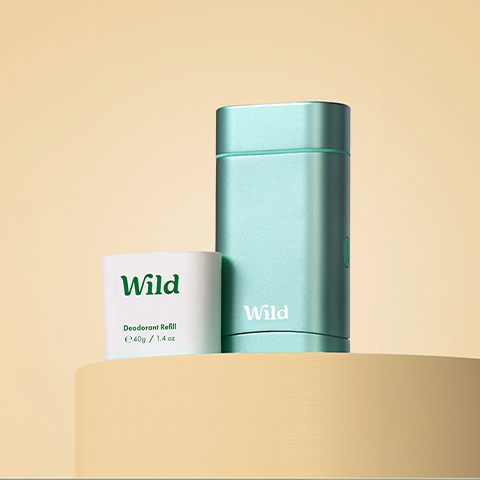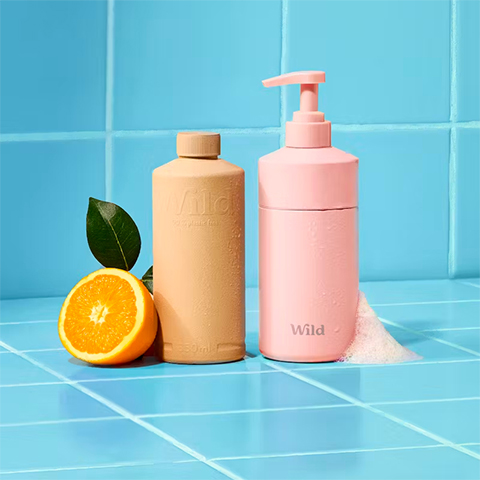The Plastic Free July Challenge is a global movement that helps millions of people be part of the solution to plastic pollution, and it’s right up our street here at Wild! We’re over halfway through the month (quick question, where has this year gone?!) and we know that sometimes the lack of momentum to keep going can kick in , so we’re here with a kick up the…well, we’re here to help you keep going! We’re sure you’ve already been investing in and swapping to some awesome plastic-free options to accompany your fantastic Wild deodorant in your day-to-day life.
But what’s the bigger picture?
We read up on The PEW Charitable Trusts’ “Breaking the Plastic Wave” project and thought we’d share what we learned. PEW sets out to solve today’s biggest problems with research and insisting on tangible solutions, and they’ve set about tackling our plastic problem. You can read the summary here. It’s important to note that PEW underlines that they are here to fight against plastic pollution, not plastic, because as we all know, plastic is incredibly useful and we quite simply need it sometimes! Plastic pollution is huge. They estimate that “11 million metric tons of plastic entered the ocean from land in 2016, adding to the estimated 150 million metric tons of plastic already there.” If we continue as we are now, i.e. business as usual, the report predicts that “plastic flows into the ocean are projected to nearly triple by 2040, to 29 million metric tons per year”.
29,000,000 tonnes. What does that even mean?
A male African Bush elephant weighs 6,000kg. You’d need around 4,833,333 elephants. The Leaning Tower of Pisa weighs 14,500 tons. You’d need 2,000 towers. The Boeing 737-800 has a maximum takeoff weight of about 80,000 kg. You’d need 362.5 planes. No matter how you try to contextualise it, it’s a terrifying figure.
But there is hope, and it’s found within the PEW model for System Change. The report demonstrates that, if the world were to “apply and robustly invest in all the technologies, management practices, and policy approaches currently available—including reduction, recycling, and plastic substitution—in 20 years there would be about an 80 percent reduction from the current trajectory in the flow of plastic into the ocean.”
So what needs to happen? Well, a “system-wide problem demands system-wide change”, and PEW have broken this down into 5 sections:
Reduce:
The pressure being on both the individual and the industrial, we need to reduce plastic production and consumption by eliminating it where possible, reusing, and revamping delivery models to be less plastic hungry. This could avoid nearly ⅓ of plastic waste generation.
Substitute:
Industries and businesses need to substitute single-use plastic with paper and compostable materials. Easy targets are multilayer soft plastic wrappings, bottles, bags, and a preference for single-material films will also go far (things are very hard to recycle when they contain a mix of materials)
Recycle:
Packaging and products also need to DESIGNED to be recycled once they can no longer be used. This will help more than double the amount of economically recyclable plastic out there. The report explains that “[t]he mix of polymers, additives, and dyes that make up low-value plastic dilutes the quality of the recycled output and limits its viability as recycled content.”
Dispose:
We need to expand waste collection and recycling rates in the middle/low income countries to avoid dumping and tipping plastics directly into landfills or the oceans
Mismanaged:
PEW’s plan for significant change by 2040 still shows that there will be a percentage of plastic waste which is burned, buried, or bobbing about on the ocean, however, if the above actions are undertaken overall, annual microplastic leakage into the ocean would reduce by 1.8 million metric tons per year (from 3 million metric tons to 1.2 million metric tons).
The report provides some much needed hope and realistic optimism moving forward, and it’s great to see accountability in there reaching from the individual all the way up to the massive industries pumping out plastic pollution like there is literally no tomorrow.
So that’s the REALLY big picture. We know that, sometimes, when you look at the big picture, there’s the risk of feeling like no small changes at the individual level could ever be important. But those small changes at the consumer level are a valid and integral part of that report! The ripple effect is not to be underestimated - especially when it comes to keeping plastic out of our oceans.

